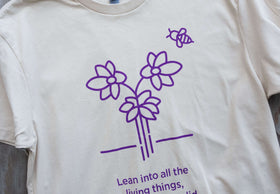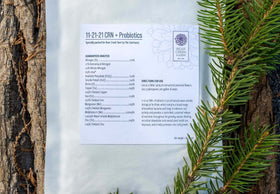Gardening can feel like a solitary endeavor, a personal dance with the soil, sun, and seeds. But beneath the surface, an extraordinary network is at work, connecting plants in a symbiotic web of life. This underground marvel, known as the "Wood Wide Web," reveals a hidden layer of communication and cooperation in the plant world that can transform the way we garden.
What is the Wood Wide Web?
The term "Wood Wide Web" refers to the intricate network of mycorrhizal fungi that connect the roots of plants and trees in an ecosystem. Mycorrhizal fungi form symbiotic relationships with plants, creating vast, interconnected systems that resemble the internet. These fungi colonize plant roots, extending their hyphae, gossamer-fine fungal tubes, far into the soil, and in return, plants supply the fungi with sugars produced through photosynthesis.
This symbiosis is far from simple. The Wood Wide Web facilitates a range of complex interactions, from nutrient exchange and water absorption to communication and defense mechanisms. Imagine a bustling, underground marketplace where plants trade resources, send signals, and support one another in times of need. This is the hidden world beneath our gardens.
The Wonders of the Wood Wide Web
-
Nutrient Sharing: One of the most remarkable functions of the Wood Wide Web is its ability to redistribute nutrients. When a plant, such as a towering oak, absorbs more nutrients than it needs, it can transfer excess nutrients through the fungal network to neighboring plants. This sharing ensures that weaker or younger plants receive the necessary sustenance to thrive.
-
Communication and Defense: Plants under attack by pests or diseases can release chemical signals through the Wood Wide Web to alert nearby plants. These neighboring plants, in turn, can activate their own defense mechanisms, such as producing toxic compounds to deter the invaders. It’s a botanical SOS system, where plants come together to defend their community.
-
Seedling Support: Mother trees, or older, established plants, play a nurturing role in this network. They can direct nutrients to their offspring or seedlings, enhancing their growth and chances of survival. This support system ensures that new generations of plants establish themselves successfully in the ecosystem.
-
Enhanced Resilience: The interconnected nature of the Wood Wide Web contributes to the overall health and resilience of plant communities. A diverse and robust fungal network can help plants withstand environmental stressors, such as drought or disease, more effectively.
Harnessing the Wood Wide Web in Your Garden
Understanding the Wood Wide Web can revolutionize home gardening practices. Here’s how you can harness this natural network to create a thriving, resilient garden:
-
Promote Soil Health: Healthy soil is the foundation of a strong Wood Wide Web. Minimize soil disturbance by reducing tilling, which can disrupt fungal networks. Instead, use no-dig gardening methods and add organic matter, such as compost and mulch, to enrich the soil. These practices support fungal growth and enhance soil structure.
-
Diverse Planting: Plant a variety of species to encourage a robust fungal network. Different plants support different types of mycorrhizal fungi, creating a diverse and interconnected ecosystem. Companion planting, where plants with complementary needs and benefits are grown together, can maximize the advantages of the Wood Wide Web.
-
Use Mycorrhizal Inoculants: When planting new plants, particularly trees and shrubs, consider using mycorrhizal inoculants. These products contain spores of beneficial fungi that can jumpstart the formation of a fungal network around your plants' roots. This is especially useful in new gardens or areas where soil health is poor.
-
Minimize Chemical Use: Excessive use of chemical fertilizers and pesticides can harm mycorrhizal fungi and disrupt the Wood Wide Web. Opt for organic fertilizers and natural pest control methods to maintain a healthy fungal community. The more balanced and natural your garden practices, the stronger the underground network will be.
-
Water Wisely: Proper watering techniques can also support the Wood Wide Web. Over-watering can create waterlogged soil conditions that are detrimental to fungal health. Water deeply but less frequently to encourage plants to establish strong, deep root systems that interact more extensively with the fungal network.
Embracing Nature’s Wisdom
The Wood Wide Web invites us to view our gardens not as isolated plots of land but as dynamic, interconnected ecosystems. By fostering healthy soil, planting diversely, and minimizing chemical interventions, we can tap into this natural network and cultivate gardens that are not only beautiful but resilient and sustainable.
As gardeners, we have the unique opportunity to nurture this hidden web, creating spaces where plants thrive through collaboration and support. The next time you kneel down to plant a seed, remember that beneath your hands lies a world of connections, quietly and intricately weaving the tapestry of life. Embrace the wisdom of the Wood Wide Web, and let it transform your gardening journey.




